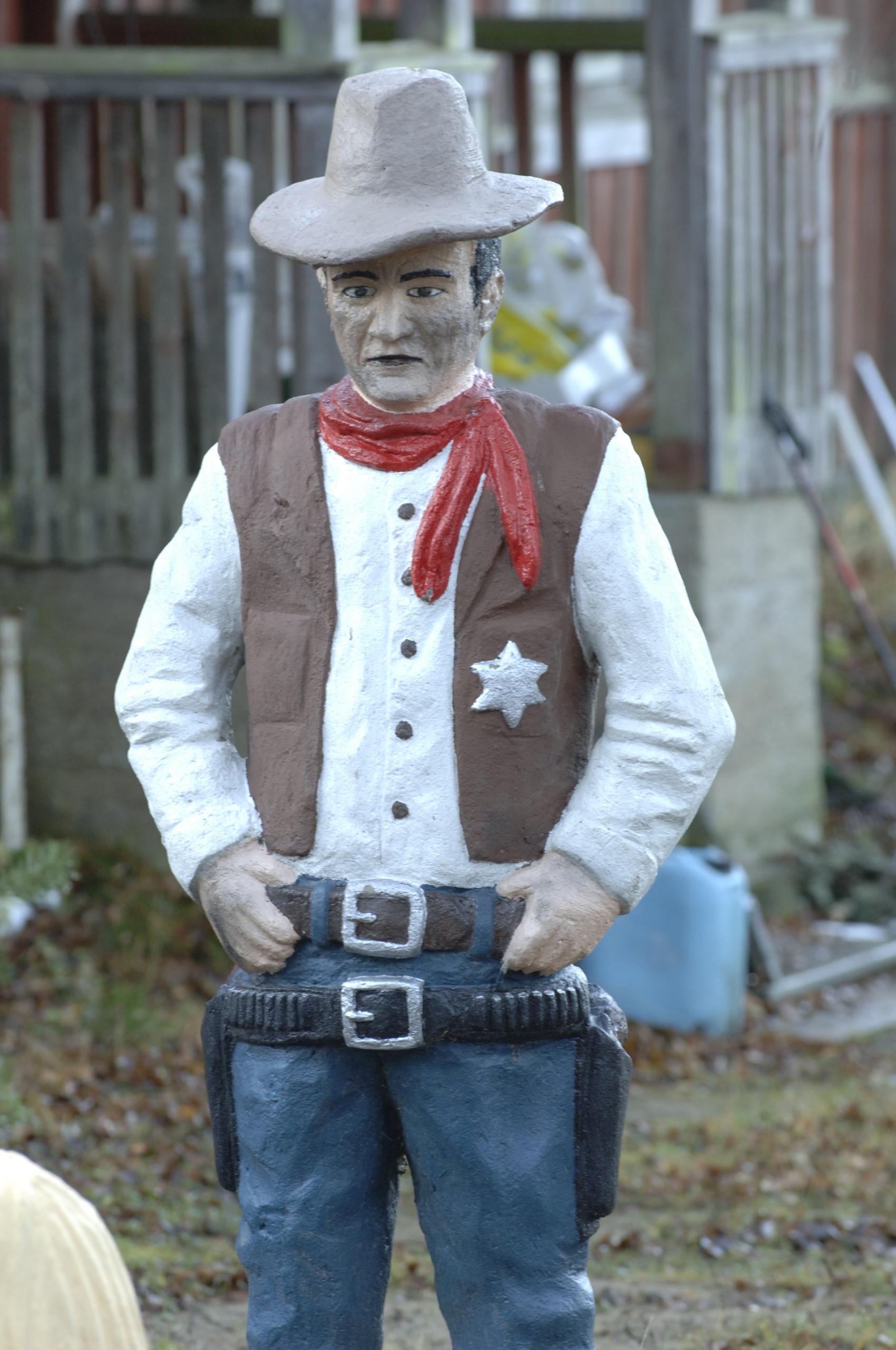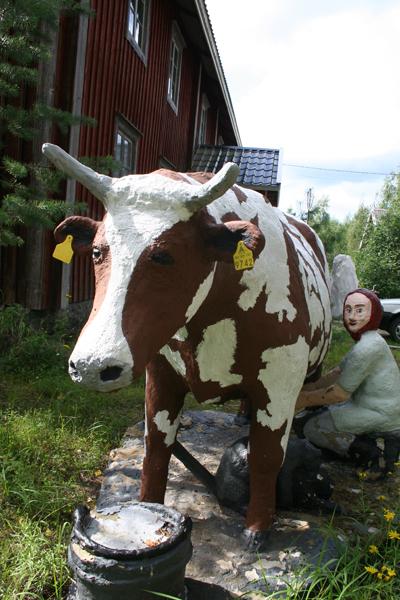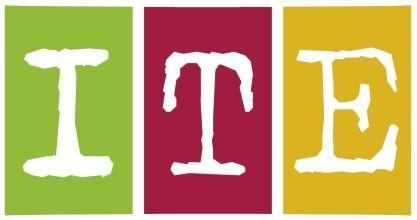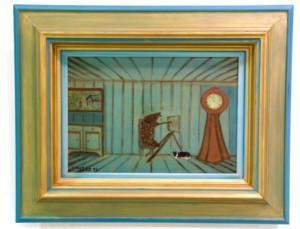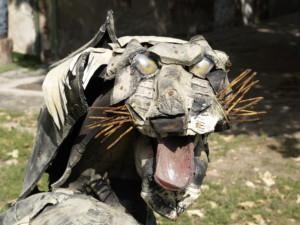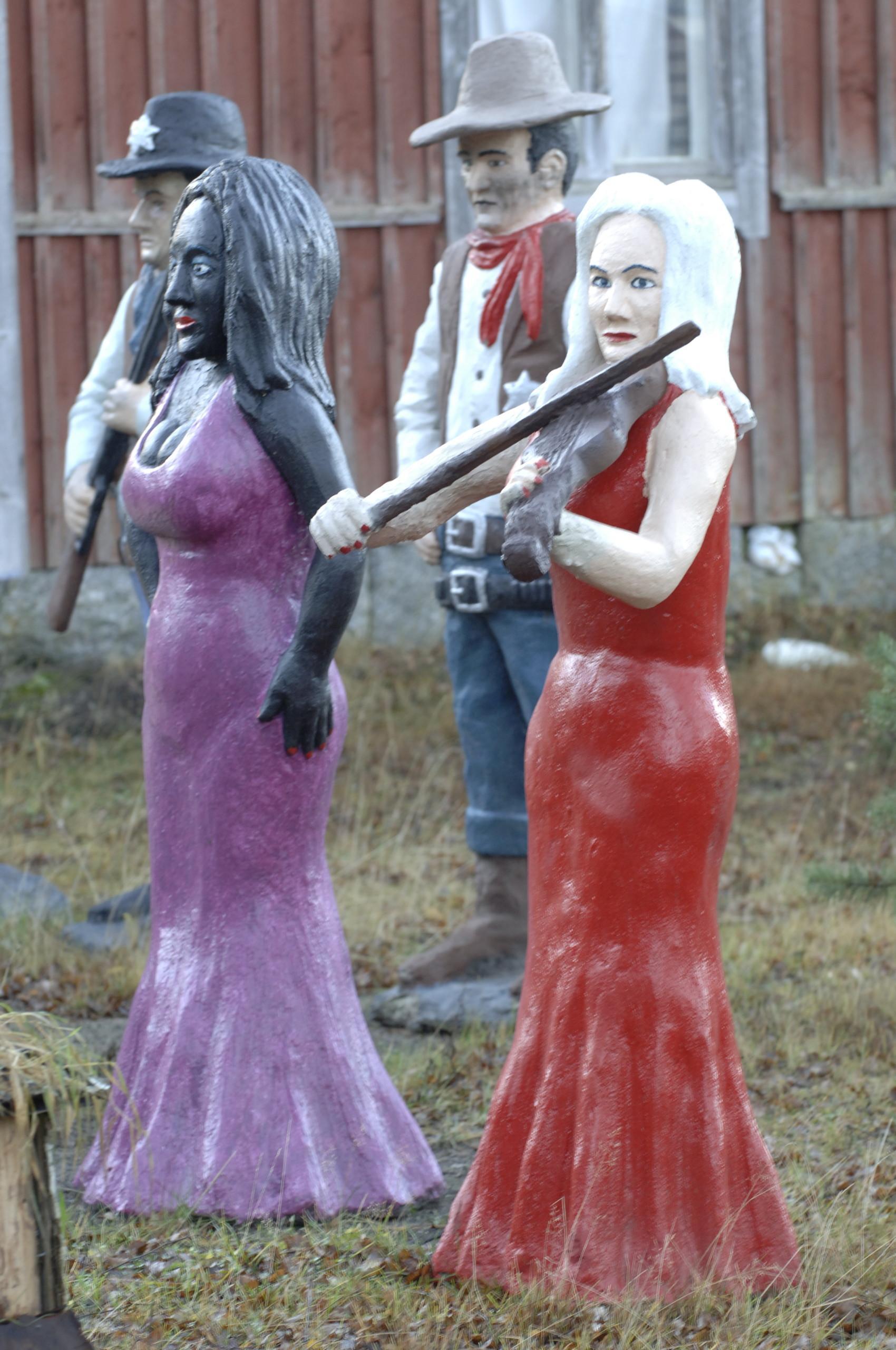
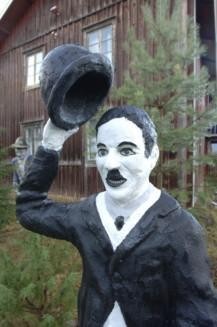
Olavi Laiho
Jurva (1951)
On a journey through a thick forest a colourful garden can be seen from cars passing by. Life-sized, brightly painted concrete statues of figures seen on TV: Linda Lampenius wears a flaming red Hollywood costume in one; in another she is naked and boldly excited playing the violin on the back of a stallion. Three John Waynes are fully dressed and ready to defend law and order with their weapons. There are also three voluptuous women, one of them black, having a bath. A dark jazz singer in a scarlet dress is accompanied by a couple of Finnish accordionists. A couple of Chaplins are monkeying around. The homely picture of our country is sweetened by a milker, who is milking the EU-ear-marked Daisy while cats play around her feet. This tight cinematic cluster of sculptures will force a smile out of the most po-faced citizen.
Olavi Laiho is a carpenter, whose hands mould wood and concrete with a realistic sense of humour. Even at a young age, he took a knife in his hand and let wood chips fly as he carved animals. But his home was influenced by the demons of a doctrine that robbed those little hands of their creativity; the wooden bears ended up in the stove. This denial of pictures, all too common and perhaps inherited from the graves of the Lutheran Creed, has resiliently continued its destructive work in various forms from generation to generation. ITE artists, however, have not asked permission to reject it.
Olavi Laiho bought an early 20th century house in Jurva in Southern Ostrobothnia. Its dilapidated earth-red walls make a perfect contrasting background to the playful carnival of colours. Laiho’s cottage gallery and workshop are in the house. Folk figures are reflected in the flames from the fireplace; an old woman is flirting with a shabby old man, lifting her skirts as sturdy accordionists accompany the scene. Linda, exquisitely carved of wood, plays the violin while Elvis rages in the background. The entirely realistic sculptures are extremely expressive and skilfully carved out of Russian wood.
Laiho says, regretfully, that had his home circumstances been different, he might have had his talents trained and been offered different kinds of opportunities. But then he would not have become an ITE artist. All the restrictions and the pressures of creativity have produced a great result. Laiho is now free to admire and spoof his pop idols. “Now I can do as I please since the communists have joined the heavenly party.”
Laiho says he gets his ideas from magazines. Linda Lampenius once posed naked in a Swedish magazine, and since Laiho had been thinking of sculpting a horse, he combined the two ideas. Linda must be a Finnish Hollywood equivalent to Marilyn. Like Monroe, Linda too combines a highbrow skill with ridiculous excesses of populism, wearing the make-up of an innocent in her very publicly acted role. Laiho’s sculpture mixes innocence with carnivalistic devilment, and not even the creature can avoid Linda’s seduction.
Laiho has lately been working on a series of monuments to six master accordionists, including the famous Finnish players Lasse Pihlajamaa and Viljo Vesterinen. He also plays the accordion himself and thus continues the noble tradition of box-squeezing surrounded by the old masters.
Text: Erkki Pirtola. Translation: Kirsti Nurmela-Knox.

